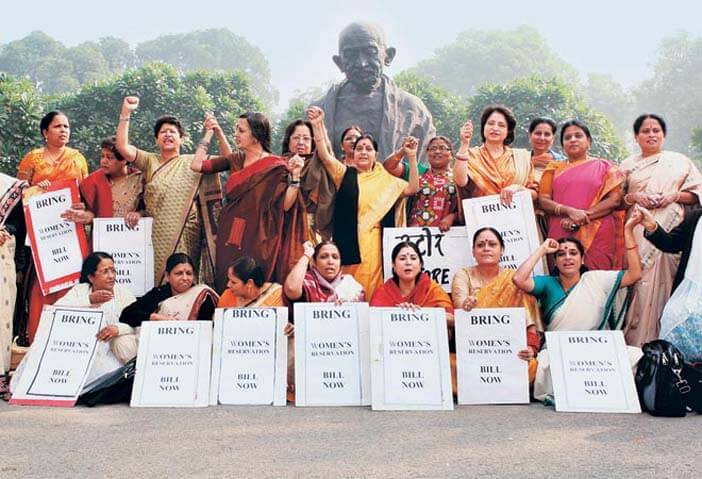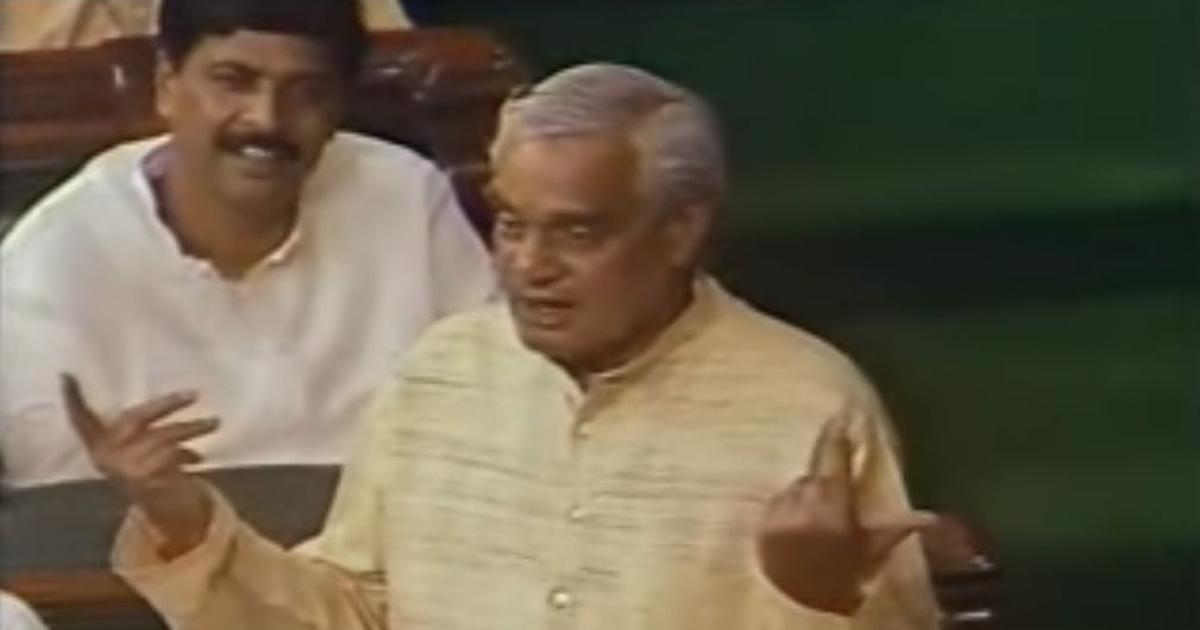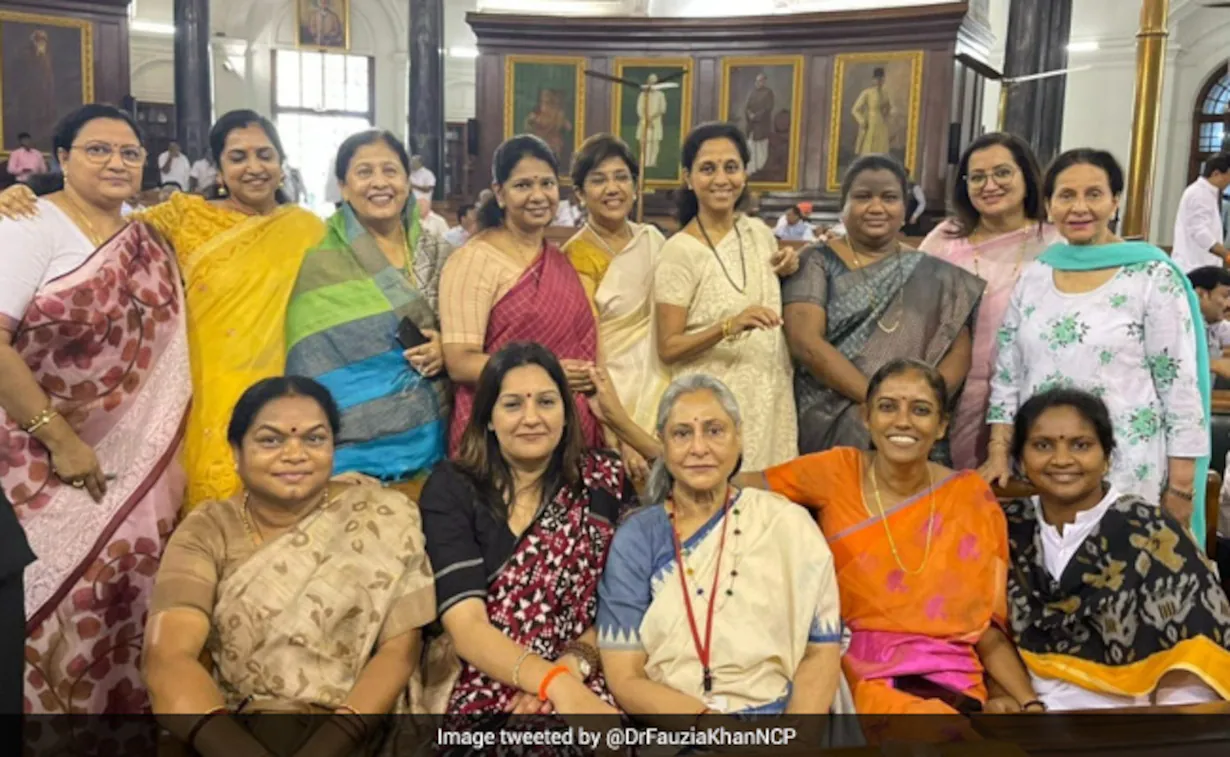Table of Contents

Introduction
Aiming to have a deep impact on Indian electoral politics, the Union Government Today (i.e., on 19th September 2023), introduced the 128th Constitutional Amendment Bill, 2023, to bring in 33% reservation for women in the Lok Sabha and all state Legislative Assemblies. It will extend to the seats reserved for SC/STs also.
Women’s reservation in Indian politics has been a critical topic for decades. It’s a powerful tool to bridge gender gaps in political representation. The primary aim of this reservation system is to increase the representation of women in politics and decision-making processes, as women have historically been underrepresented in Indian politics. In this article, we’ll explore the history and present status of women’s reservation in Indian politics. We’ll also delve into the Women’s Reservation Bill and understand the constitutional provisions guiding this initiative.
History of Women Reservation Bill
The Women’s Reservation Bill was proposed to reserve one-third of seats in the Lok Sabha and state legislative assemblies for women but has faced repeated hurdles and remains pending in Parliament.
Former Prime Minister Rajiv Gandhi introduced the idea in 1989, but it failed to pass in the Rajya Sabha.

Prime Minister P.V. Narasimha Rao reintroduced these bills in 1992. The historic 73rd & 74th Constitutional Amendment Acts dealing with transformation of Panchayats and Municipalities respectively passed in 1992 and were implemented in subsequent year in 1993. One-third reservation for women in local bodies also implemented through these acts.
In 1996, the 81st Constitution Amendment Bill for reservation of women in Parliament was introduced by Deve Gowda-led United Front government but didn’t pass.
The Atal Bihari Vajpayee-led NDA government attempted to pass the Women’s Reservation Bill in 1998, 1999, 2002, and 2003, but it didn’t succeed.

In 2004, during Manmohan Singh’s UPA-I government, the bill was included in the Common Minimum Programme and finally passed in the Rajya Sabha on March 9, 2010. However, the bill never reached consideration in the Lok Sabha and lapsed in 2014.

Present Status
Today, women’s reservation extends to urban local bodies and municipal councils, depending on individual state policies. Some states have passed bills reserving 50% of seats for women in local bodies. This move has facilitated the empowerment of women in political decision-making at the local level.
Panchayati Raj Institutions (PRI)
73rd Constitutional Amendment Act 1992 provides for the reservation of seats for scheduled castes and scheduled tribes in every panchayat (i.e., at all the three levels) in proportion of their population to the total population in the panchayat area. Further, it also made provision for reservation of not less than one-third of the total number of seats for women (including the number of seats reserved for women belonging the SCs and STs). Further, not less than one-third of the total number of offices of chairpersons in the panchayats at each level shall be reserved for women. As per this policy, a certain percentage of seats in rural local bodies, including gram panchayats, panchayat samitis, and zila parishads, are reserved for women. The exact percentage varies from state to state but as per constitutional provision, it should not be less than 33%. This policy has been successful in increasing women’s participation at the grassroots level.
Municipalities
74th Constitutional Amendment Act 1992 provides similar reservation policies for women in urban local bodies, such as municipal corporations and municipal councils. The percentage of seats reserved for women in these bodies also varies by state, minimum being fixed at 33%.
Women Representation in Parliament Today

At present there are total 82 women MPs in Lok Sabha, which is only around 15% of total strength of the house. This bill will increase number of the women MPs in the Lok Sabha to 181, with respect to present total strength of 543.
Please keep in mind that, this bill after passed in both houses will not apply to the Rajya Sabha or state Legislative Councils.
What is the Women Reservation Bill
The Constitution 108th Amendment Bill, 2008 seeks to reserve one-third (33%) of the total number of seats in state legislative Assemblies and Parliament for women. One third of the total number of seats reserved for Scheduled Castes and Scheduled Tribes shall be reserved for women of those groups in the Lok Sabha and the legislative assemblies. Reserved seats may be allotted by rotation to different constituencies in the state or union territory. The bill says that the reservation of seats for women shall cease to exist 15 years after the commencement of the amendment act.
You can read details about the The Constitution 108th Amendment Bill, 2008 on the website of PRS Legislative Research on the link: PRS Legislative Research
The Narishakti Vandan Adhiniyam, 128th Constitutional Amendment Bill, 2023 introduced by present government has similar provisions as that of bill introduced in 2008 mentioned above.
The reservation for women, however, will kick in only after the completion of the delimitation exercise based on the first Census conducted after the passage of the Bill, which puts off its date to around 2029. Rotation of seats reserved for women will happen only after subsequent delimitation exercises, to be determined by Parliament by law.
Constitutional Provisions
The Constitution of India provides a solid foundation for women’s reservation in politics. Articles 14, 15, and 16 ensure equal opportunities and non-discrimination. Article 243D and 243T in 73rd & 74th Constitutional Amendment Act 1992, empower states to reserve seats for women in PRIs and urban local bodies. However, amending the Constitution is required to implement the Women’s Reservation Bill.
You can read Constitution of India in any language on the Legislative Department Website of GoI on the link: Constitution of India
Impact and Controversy
The reservation for women in politics has had a positive impact on women’s participation in decision-making processes at the local level. However, there is ongoing debate and controversy about extending similar reservations to the national and state legislatures. Some argue that it is necessary to promote gender equality and address the historical underrepresentation of women, while others raise concerns about potential tokenism, women’s capabilities, and the need for broader societal changes to address gender inequalities.
Conclusion
In India, the concept of women’s reservation in politics has a rich history, with its origins in the transformative policies of 1993 that reserved seats for women in local Panchayati Raj Institutions (PRIs). Today, this reservation extends to urban local bodies in various states, with some even reserving 50% of seats for women. However, the Women’s Reservation Bill, which seeks to reserve one-third of seats in the Lok Sabha and state legislative assemblies for women, remains a topic of debate and awaits implementation. The Indian Constitution lays the foundation for such initiatives, emphasizing equal opportunities.
You can also read:


3 thoughts on “Women Reservation Bill: History, Current Status and Provisions”